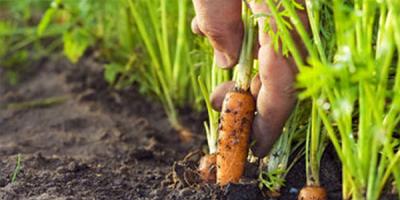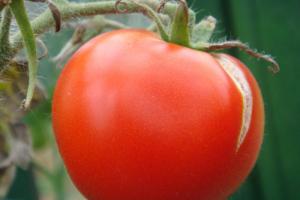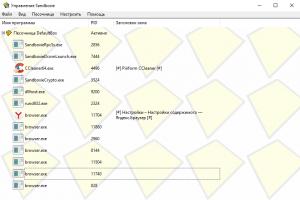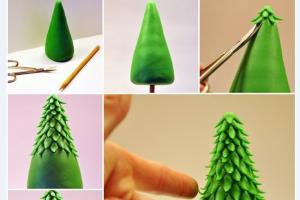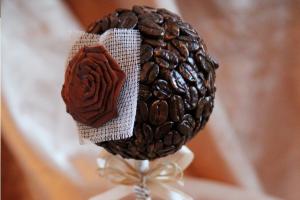Cats, dogs and hamsters are wonderful, but many people have such pets. What to do if you want something unusual, interesting and not too expensive? You can give yourself or your child a wonderful gift - an ant farm. The originality of this gift lies, first of all, in the fact that it is quite easy to make with your own hands.
Preparatory stage
To make an ant farm with your own hands, you need to do a little preparation. To start It’s worth deciding on the container in which we will place a restless family. An excellent ant farm can be obtained from a flat aquarium, but this requires additional costs. Craftsmen can make a container from plexiglass, fastening it with silicone glue. In this case, the design will be exactly the shape that suits you most.
The simplest version of an ant farm will be made from two containers for bulk products of different sizes. These can be jars or boxes made of transparent material without drawing or damage, one of which fits freely inside the other. Both jars must have tight lids. You will populate a colony of ants in the space between two banks so that it is convenient to observe her life.
Soil or base for an anthill
The choice of filler for an ant farm depends on where you are going to get its inhabitants:

Be sure to take into account that the mixture of soil and sand should not only be well loosened, but also moistened. However, do not overdo it; if you make the mixture too wet, the ants will simply drown in it.
Do not fill the container to the very top with the mud mixture. Leave a few centimeters of free space. And do not compact the mixture, but simply shake it lightly so that the inhabitants can easily make passages for themselves.
How to collect ants
 The easiest way is to look for ants in your yard. There is nothing complicated about this, especially if you involve a restless child in the process. Small anthills are found very often; to find them, you just need to follow where the small workers so purposefully drag their finds.
The easiest way is to look for ants in your yard. There is nothing complicated about this, especially if you involve a restless child in the process. Small anthills are found very often; to find them, you just need to follow where the small workers so purposefully drag their finds.
To collect with an ant, take gloves, a scoop and a jar with a tight lid. You can make several holes in the lid with a thin needle for air access, but they must be so small that insects cannot crawl out. You can drop honey or jam at the bottom, then the ants will gather around the sweets and will not try to get out. Carefully dig up several inhabitants of the anthill and place them in a jar. Try to find the queen. She is much larger than other ants. 30 - 40 inhabitants are enough for your farm.
To populate a farm you created with your own hands, you need to take into account the following nuances:
- Only working insects can be collected on the surface of the anthill. They are unable to reproduce. To observe how ants lay eggs and care for them, be sure to obtain a queen queen. Alas, to do this you will have to dig the anthill quite deep.
- Ant farm, inhabited only by worker ants, will exist for no more than four weeks. This is their natural lifespan.
- In forest anthills you can find more large species insects than at urban sites. They are easier to keep an eye on.
How to care for an ant farm
It’s not enough to make a house for an ant family. To observe how ants live for a long time, you need to properly care for the farm:

Understand how making an ant farm yourself is not at all difficult. If you involve children in this process, then watching the little inhabitants will be even more interesting. The main thing is to act carefully so that the ants live where it is convenient for you, and not where they want.
An ant farm, or as it is also called a formicarium, is an anthill under glass, a space where one or several colonies of insects live. The owner gets the opportunity to observe life different types ants, as if under a microscope: how they make a tunnel, collect food, raise larvae. Workers, soldiers, womb - it's literally an entire city under the control of one person! In everyday life, formicaria are unpretentious; ants are not walked at 5 am, they are not bathed, and they are not taken for vaccinations.
What is an ant farm
Formicaria originate from the 19th century. At first they were used exclusively for scientific research. The surge in popularity among naturalists led to the commercialization of the project. Since 1929, formicariums began to be made for sale, and in 1931, inventor Frank Austin patented his sample. The world's most famous formicariums are created by the Ant Farm brand, sending ants by mail, AntKing and AntPlanet.
An ant farm is a home anthill for a child. It will be interesting for him to have a whole “kingdom” under his control. By observing unique processes, he will be closer to nature and learn to be responsible for those he has tamed. Adults also like it: in the office it entertains visitors and inspires employees; at home it helps them relax, clear their thoughts and recharge their batteries. In stores there are small models that are convenient to put on the table, and large ones like aquariums.
Formicarium for ants
The farm looks like a neat aquarium or display case with filler inside. There are simple and complex systems, where lighting, acceptable levels of humidity and temperature are automatically maintained. Designer farms are very popular. They have unusual shape, bright colors, the function of connecting the arena (the space where insects walk and hunt), lighting. Sizes - from small to large: there are tabletop ones for the living room or office. Gel, gypsum, and a mixture of soil and sand are used as fillers.
Soil-sandy
Popular examples have the form of a display, cube or cylinder with double walls (the so-called “Cubus”, “Colosseum” models). Containers are filled with multi-colored sand, in which a family of ants develops and builds tunnels. It is expensive, but the kit includes sand, insect food and other useful items. The soil and sand farm is very visual and fascinating.
Gel anthill
A gel farm is similar to an aquarium, but is filled not with water, but with a transparent gel blue color. It is non-toxic, safe for insects, and simultaneously serves as a living environment and food. The gel ant farm is sealed and convenient. It does not require any maintenance, once every 5-7 days the lid must be opened for a couple of minutes to ventilate and remove dead insects that have already outlived their life.
With gypsum filler
A gypsum ant farm is not as spectacular, but the insects are comfortable there, and the price is reasonable. Plaster is practical, available material. This is the most common type of formicaria. Among the models there are compact ones for the desktop and large ones. The surface of the gypsum is often brightly colored, which makes the anthill a stylish, unusual addition to any interior.

How to choose an ant farm with ants
Artificial ant farms are just becoming popular among domestic buyers, but in the West they have been selling well for a long time. It is convenient to order a farm in the online store, where there are models of all types, designs and sizes. Sellers offer to visit the showroom and choose a product there or make a purchase remotely with delivery. Among the assortment of a regular pet store, especially in the outback, it is usually impossible to buy a formicarium with ants.
Formicarium price
In Moscow, St. Petersburg and other cities of Russia, a popular ant farm from Antking or Antplanet can be purchased separately or together with a family of ants, food, and accessories. Average price – 3-6 thousand rubles, models self made, with additional modules are more expensive. You can save a lot by taking advantage of promotions, discounts, sales, and gift coupons.
How much does an ant farm cost in Moscow – review of online stores:
How to make an ant farm with your own hands
You can even create an anthill at home using improvised materials. In terms of price, it will be cheap, and in appearance it will be no worse than a store-bought one. You can save on everything - containers, mixtures, ants. Get a farm with ants original form, different from typical mass-produced models. Alternatively, you can buy a ready-made mold and fill it with the mixture and insects yourself.

What you need for a home anthill
An ant farm at home is made from two jars with wide necks, a flat bottom, and tight lids. One should fit freely into the other so that there is a gap between the walls and necks. For the ant house, you also buy a soil-sand mixture (or a special gel, which is sold in the same place where formicariums are sold), a family of ants.
Where to get ants
There are two ways to provide a formicarium with hardworking residents:
- Buy ants for an ant farm at a pet store (where ant farms are sold). This is convenient, since you can immediately buy ants with a queen plus special soil for them. The disadvantages are obvious - increased cost, risk of damaging its inhabitants during shipment.
- Find it near the house or in the forest. In the second case, you need to take soil nearby so that the insects do not experience stress. In order for the colony to reproduce, dig up the queen, that is, destroy the nest. When catching ants, wear gloves only to avoid bites.
Farm structure
The preparation for an ant house is two jars placed one inside the other. It is important to close the inner lid tightly. A mixture of soil and sand (proportion 2 to 1) is poured into the opening between them. The farm is ready. All that remains is to create a depression with a stick and launch 20-25 ants so that they begin to dig tunnels. The structure is tightly closed with a lid with small holes to allow air to flow inside. You cannot use fabric or paper for this; the ants will gnaw through them and run away.
A real colony is a self-regulating system. How to care for the inhabitants of the farm is explained in the instructions for the ant farm with photos, as well as the video below. In order for insects to live long and comfortably, it is important to observe simple rules:
- feed with sweet compounds or special food;
- moisten the soil - just put a piece on the lid once a week wet cotton wool;
- ensure that the room temperature is not lower than +15 degrees;
- cover the jar from sunlight (ants live in the dark);
- remove dead specimens using a cotton swab or pad.

What you can’t do with the farm:
- Close the jar tightly - the insects will suffocate. Make only small holes so that pets do not escape.
- Leaving the farm in the cold will cause the ants to hibernate. They also do not tolerate intense heat, so it is better to keep the jar away from direct rays of light.
- Shaking or dropping the container means the insects experience severe stress.
- If you pour water, the ants will die. You should also not forget to moisturize, this leads to the death of the colony.
Feeding the ants
The best food for ants is honey, sugar syrup, jam or pieces of sweet fruit; you can prepare a glucose solution. It is allowed to feed insects if they are definitely not poisonous. Eating is no more than once every few days, the amount of food is small, otherwise the entire colony will stop developing. If the litter is gel, you don't need to worry about the food at all. For a small family, the supply of gel is enough to feed them for 3-6 months, then they buy more.
Video
When it comes to ants, we think of small black insects that sometimes fly and love sugar. But this is only a superficial idea of these amazing living creatures.
The article will not talk about a couple of annoying bugs, but about creating a full-fledged formicarium with your own hands.
Types of ants there are different ones. But no matter what species is chosen for breeding, the same rules for creating a cozy anthill apply to everyone. Where to start?
Read also:
How to make a formicarium for ants?
As you can see from the photo, this is a special aquarium, an ant farm. They are different sizes, formats, with different contents. Can be used as a primer sand. The ants will use it to build nests, create passages and an arena.
Perfect fit finely sifted natural sand. You should avoid using garden soil as it contains various bacteria and chemicals. It is acceptable to use plaster. It is poured into a special mold, forming passages and burrows. After hardening, the formicarium will be ready.

The third option is to use special gel. Insects will use the gel both for construction and as food.
Features of keeping domestic ants
An important component happy life ants is moisture. Its level varies from 80 to 90 percent.
Lack of moisture is tantamount to the death of the entire anthill. If there is excess moisture, fungus and mold can appear, which is also destructive. If perspiration appears on the walls of the formicarium, this is a sure sign that you need to stop moisturizing for a while.
The required level of humidity is determined practically.
For drinking You can put a small saucer or a tin bottle cap in the anthill. The ants will use this water to humidify their home and build new tunnels. It is important to remember that only filtered water can be given to ants.

In the vast majority of cases, suitable for ants room temperature, order 25 degrees Celsius. If the room is cool, this will slow down the development of the ant farm. In such cases, it is advisable to use special lamps or heating pads. A terrarium thermometer will help you track the correct temperature level.
Read also:
Ants feel best when moderate lighting. It is advisable to darken not only the chambers, but also the entire formicarium.
Insects will also get used to open lighting, and quite quickly, but for a comfortable life it is better to leave them in the shade. Particularly harmful effects sunlight has an effect on the larvae. Adults are also not recommended to be exposed to ultraviolet radiation for a long time.
If for some reason the owner needs lighting for a formicarium at home, experts recommend using moon-colored lamp. Such a lamp will be able to warm ants in a cool room and will not cause them stress.
What to feed the ants?
Contrary to popular belief, sugar is not the best food for ants. Protein source Worms and cockroaches may appear. To provide carbohydrates, make honey water, diluting 1:1. It is important to remember that such water can ferment quite quickly, and this is harmful to insects. As solid food suitable for ants: pieces of vegetables and fruits, bread crumbs, dead insects and mixtures for parrots.

Like many living things, ants hibernate. Insects become inactive, refuse proteins, and rarely leave their nests. During this period, you should change your approach to caring for the formicarium with your own hands. The temperature must be maintained between 0 and 10 degrees Celsius. The aquarium can, for example, be placed in the refrigerator.
Periodically, but not so often, you need to moisten the soil. Hibernation lasts 1-2 months. After this period, you need to bring the formicarium into the heat again and gradually warm it up to the usual temperature. The warming process may take up to 7 days.
Here's how to make your own ant farm. At proper care, the owner can get a very interesting and developed ant world. It is interesting to watch him, he is interesting to both children and adults.
If you've ever looked at an anthill and wondered what goes on inside, creating your own ant farm will satisfy your curiosity and provide an incomparable experience in studying the life of ants. By releasing ants into your farm, you will witness how tunnels and paths are built, and how important these little creatures begin to scurry back and forth, as if they are performing some kind of task. Read step 1 and you will learn how to build an ant farm using simple materials.
Steps
Part 1
Preparing materials and searching for ants- Airtight containers of different sizes are perfect for the project. This way you will have more options when choosing farm size.
- The jars must be free of cracks, patterns, etc. A simple, clean jar is best for observing ants.
- If you want a flat ant farm, go to your local pet store and buy a narrow aquarium. You can also order an aquarium for your farm online.
-
Prepare a mixture of soil and sand. Ants need to live in a moist environment that will allow them to dig and dig tunnels. If you want to collect ants in your yard or nearby area, it is best to use the same soil so that they live in their usual habitat. Dig up enough soil to fill the space in the jar. Use a fork or your own fingers to loosen the soil. Now mix 2 parts earth with 1 part sand. If the soil is initially sandy, less sand should be added.
- If you want to find ants far from home, the ground is no longer suitable. You can buy sand and fertilized soil from the gardening department and mix them together.
- If you order special ants from a farm, they must come with the correct habitat mixture.
- Your mixture should be moistened, but not soaking wet. If it is too dry, the ants will dry out, and if it is too wet, they will drown.
-
Find an anthill. There are many types of ants, but mostly they all live in the ground. Look for an anthill in your yard. You will recognize it as a volcano-shaped bump with a tiny hole at the top.
- You can also follow the ants to find the anthill. If you see a bunch of ants, follow them.
- Explore the anthill and make sure you are not dealing with biting ants. If you don't want to take risks, order ants online.
-
Collect the ants. Once you have found the ant colony, bring a jar with holes punched in the top (not the jar you need for the farm) and a large spoon, place the ants in the jar. 20-25 ants is a sufficient number to start with. Here's what to remember:
- The ants may not breed until you place a queen ant on the farm. She is the one who lays all the eggs. A cluster of worker ants on the surface is most likely sterile. Therefore, if you want to see the process of laying eggs, you will need a queen. In this case, you will most likely have to destroy the natural colony.
- If you are interested in researching the reproductive cycle, it is better to order ants along with the queen from a specialized farm. This way, you don’t have to dig deep into the anthill to find the right ant.
- If you set up a farm without a queen, the ants will likely die within 3-4 weeks, which is their natural lifespan.
Take two jars with lids. You will need a large jar and a smaller jar that will fit inside. The soil and ants will be located in the space between the large and small jar. The small jar is needed to leave space in the middle. This way, the ant colony will be able to build tunnels and lay eggs at the top edge, and the whole process will be clearly visible. If you skip this step, the ants will follow their natural instinct and burrow deep into the middle of the jar.
Part 2
Construction of a farmPart 3
Farm care-
Feed the ants and moisten the soil. Every few days, throw pieces of fruit, a few drops of honey or jam into the jar - ants love sugar! Do not overdo it. Ants usually get the moisture they need from their food, but if you see the soil becoming dry, soak a piece of cotton wool and place it on top of the jars for a few days.
- Do not give ants meat or any other cooked food! Otherwise, your farm will attract other insects.
- Do not pour water into the jar. If it gets too wet, the ants may drown.
-
Close the jar unless you are watching ants. Ants dig tunnels at night, in the dark. To recreate a natural habitat, cover the jar with a black scarf or cardboard. If you forget to do this, the ants will be under constant stress and lose activity. In addition, they tend to be most time in the center of the jar, not at the glass.
Don't shake the jar. Ants are fragile creatures and rough handling can cause them to die from tunnel collapse. Handle your ant farm with care.
Store the truss in a warm room. Place it in a room with a constant temperature. Do not place the can under straight lines Sun rays, the glass of the jar may heat up and the ants will burn.
- Once you get the ants, distract them with sugar and water to reduce the aggression while you search for the queen. Do not overdo it!
- Red ants are usually very aggressive, while black ants are generally more passive.
- For greater effect, you can also plant grass seeds on top. Water the grass carefully to avoid drowning the ants.
- Don't knock over the jar in the house!
- A cardboard toilet paper tube makes an excellent pipe.
- If you are going away for a long time, it would be a good idea if you leave someone to look after the ants so that they do not die from desiccation or starvation.
- Don't touch the queen, otherwise the rest of the ants will bite you.
- Ants require the same care as cats or dogs. Pay attention to them!
Warnings
- You can feed the ant dead insects if you are sure they are not poisonous.
- Never mix two colonies with each other, they may start fighting to the death. Therefore, if you catch ants yourself, make sure that they are from the same anthill.
- Do not cover the farm; the ants may suffocate. If you must cover them, use toilet paper, wrap it with an elastic band around the neck of the jar and make holes using a pin or earring.
- Beware of bites. If you have the opportunity to use gloves, great! To treat bites, use anti-bite cream. Ask a pharmacist for help.
- All ants bite, some less often than others. If you keep red ants, remember that they bite and can sting severely. Be careful. Use gloves.
- Avoid ant species that are aggressive towards people and whose bites can be painful or dangerous.


